Call For Papers
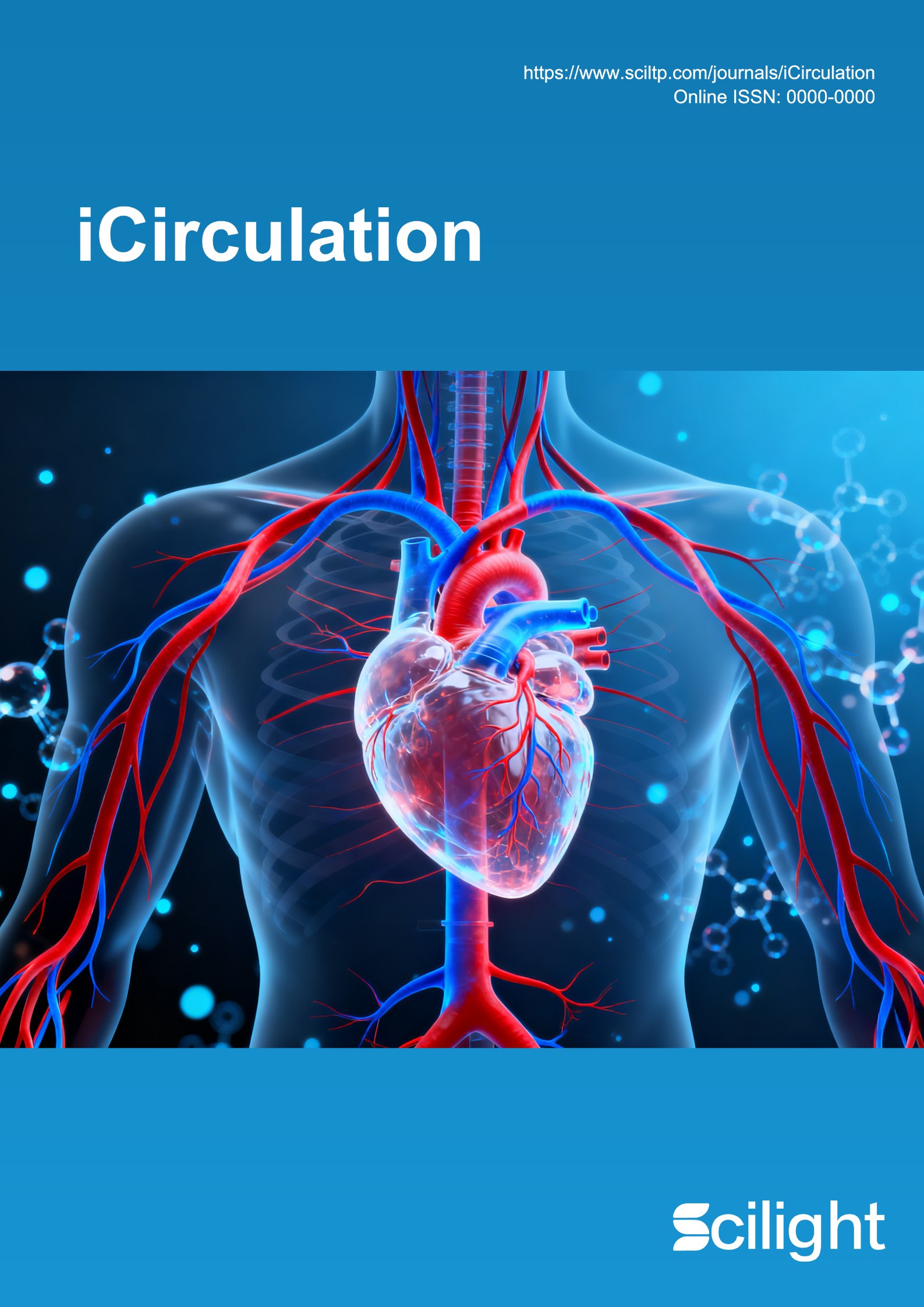
Inaugural Issue of iCirculation
iCirculation is a leading scientific forum for publishing transformative cardiovascular research that bridges foundational discovery, clinical innovation, and global population health. The journal aims to advance cardiovascular medicine by disseminating high-impact original work that shapes research paradigms, clinical practice, and public health policy. Reviews that reflect new advances of a particular area in the cardiovascular system and diseases are also welcome. The Aims and Scope of iCirculation are described on https://www.sciltp.com/journals/iCirculation/aimscope . If the submission is accepted following the peer review within the time frame of the publication of the Inaugural Issue, it will be included in the Inaugural Issue , to be published in March 2026 . ■ Distinguished Editorial Board The journal is guided by an international editorial board of leading cardiovascular experts, ensuring academic excellence and a visionary perspective. Founding board members include: Guo-Wei He – Editor-in-Chief, Academician of The National Academy of Medicine, France Gianni D. Angelini – Fellow of the Academy of Medical Sciences, UK Charalambos Antoniades – Fellow of the Academy of Medical Sciences, UK Wolfgang F. Graier – Member of the Academia Europaea Mario Gaudino – Expert of Weill Cornell Medicine, USA Daniel Loisance – Academician, Member of The National Academy of Medicine, France Arthur Weston – Fellow of the Academy of Medical Sciences, UK ■ Key Dates Submission Deadline for Inaugural Issue: January 31, 2026 Inaugural Issue Publication: March 2026 ■ Submission Instructions Authors are invited to submit their manuscripts through our online submission system. Please consult the Instruction for Authors before submission. Submission Link: https://sciflux.org/authors/submissions Journal Homepage: https://www.sciltp.com/journals/iCirculation Editorial Office Contact: iCirculation@sciltp.com Join iCirculation and contribute to shaping the future of cardiovascular research. Sincerely, iCirculation Editorial Office
iCirculation
Deadline: 31 Jan 2026
Disease, Structure, Methods, and Drug Design
Dear Colleagues, We are delighted to announce the Topic Issue of Health and Metabolism (HM) , titled “ Disease, Structure, Methods, and Drug Design ”, and would like to sincerely invite you to contribute either a research article or a review article or a perspective article to this topic issue. This topic issue will focus on emerging advances and new perspectives related to: Molecular mechanisms and structural basis of metabolic regulation and disease; Innovative experimental and analytical methods that drive mechanistic discoveries; Structure-based and mechanism-guided drug design in health and disease; Integrative multi-omics and translational studies linking molecular structure to therapeutic intervention. Please refer to the Instructions for Authors for formatting and submission details. We warmly invite you to submit manuscripts that align with these themes and to share your latest insights and research progress that will contribute to the success of this issue. Submission Link: https://sciflux.org/authors/submissions Submission Deadline: 30 June 2026 With warm regards, Prof. H. Eric Xu Shanghai Institute of Materia Medica, Chinese Academy of Sciences Prof. Ming Lei Shanghai Jiaotong University Prof. Maofu Liao Southern University of Science and Technology Prof. Ping Yin Huazhong Agricultural University Academic Editors for the Topic Issue of Health and Metabolism All manuscripts will be peer-reviewed following the established policies and procedures of the journal. The final papers will be selected for publication depending on the results of the peer-review process and the reviews of the Academic Editors and Editor-in-Chief. The Editor-in-Chief or Academic Editors without any conflict of interest with any of the authors.
Health and Metabolism
Deadline: 30 Jun 2026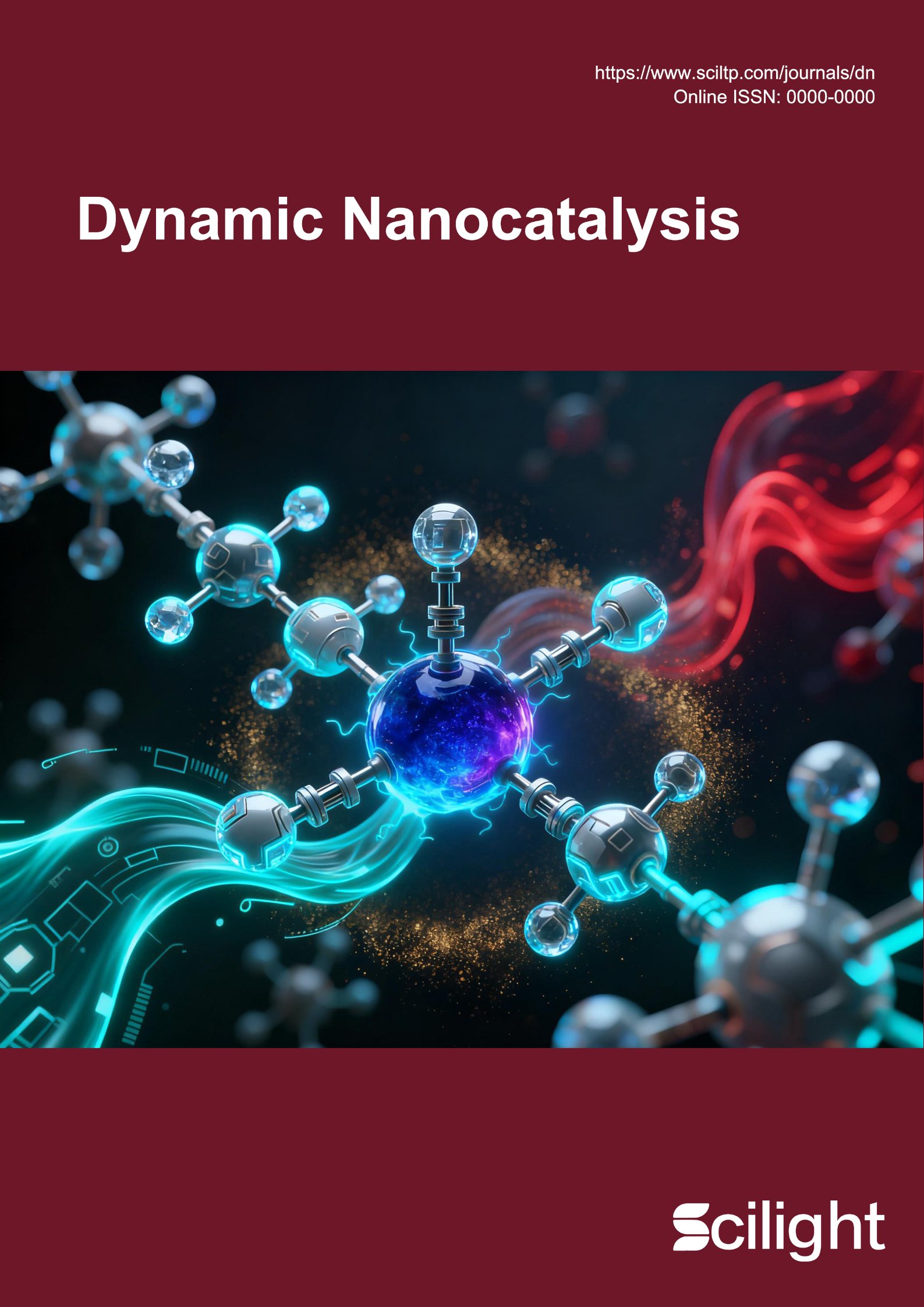
Advances in Dynamic Nanocatalysis
Dear Colleagues, Dynamic processes in nanocatalysis are actively reshaping the frontiers of materials science, energy conversion, and environmental remediation. These advances—spanning real-time catalytic performance, sustainable technology, and mechanistic insights—have garnered increasing attention from both academic and industrial communities. In response, our journal is pleased to launch a Featured Papers Collection, dedicated to capturing foundational and forward-looking research, highlighting the latest progress and inspiring further exploration in the field. We encourage researchers and leading experts in nanocatalysis and related areas to submit original research articles, reviews, perspectives, and letters that reflect the latest progress, showcase innovative methodologies, and demonstrate practical impact. Join us in advancing this rapidly evolving domain by sharing your cutting-edge work.
Dynamic Nanocatalysis
Deadline: 30 Aug 2027
Advances in Hybrid Composite Materials: Design, Manufacturing, and Applications
Hybrid composites have gained substantial attention for their ability to address limitations inherent in single-material systems. By integrating fibres, matrices, fillers, or architectures with complementary properties, hybrid composites offer tailored mechanical, thermal, and functional characteristics that are increasingly vital across sectors such as aerospace, automotive, civil infrastructure, marine, renewable energy, and biomedical engineering. Despite their promise, challenges remain in predicting, designing, and manufacturing hybrid systems that perform reliably under complex service conditions. We are pleased to announce a new platform, Progress of Composite Materials , for researchers, engineers, and industry practitioners in this rapidly evolving field of hybrid composite materials, to present recent breakthroughs, emerging methodologies, and impactful applications that illustrate the unique capabilities of hybrid composites. We invite contributions from that deepen our understanding of how combining multiple constituent materials can deliver enhanced and synergistic performance. We seek original research articles, reviews, and technical communications that explore the full spectrum of hybrid composite development. Topics of interest include, but are not limited to: advanced material design and hybridization strategies; manufacturing and processing innovations; multi-scale and multi-physics modelling; experimental and computational characterization; durability, damage mechanisms, and lifecycle assessment; optimization frameworks; and novel industrial applications. Studies that investigate new combinations of natural, synthetic, metallic, ceramic, or polymeric constituents, or that integrate digital tools such as machine learning and digital twins, are especially encouraged. Our goal is to assemble a comprehensive and forward-looking resource that stimulates collaboration and drives further innovation. By contributing to us, authors will play a key role in shaping future directions in hybrid composite research and practice. We look forward to receiving your submissions and to showcasing the impactful work being carried out in this dynamic and important domain.
Progress in Composite Materials
Deadline: 30 Jun 2026
Advanced Processing of Metal Matrix Composites
We invite researchers and practitioners to submit original papers on the latest advancements in the processing of metal matrix composites (MMCs). Topics of interest include innovative fabrication techniques, microstructure control, mechanical properties, and performance optimization. Contributions on additive manufacturing, powder metallurgy, and advanced casting methods are particularly welcome. Submissions should highlight novel approaches, experimental results, and applications in aerospace, automotive, or other high-performance industries. Keywords : Metal matrix composites, additive manufacturing, powder metallurgy, microstructure control, mechanical properties. Submission Details: Submission Deadline : 30 September 2026 Authors Instruction : https://www.sciltp.com/journals/pcm/instructionForAuthors Please contact the editorial office at pcm@sciltp.com if you have any questions.
Progress in Composite Materials
Deadline: 30 Sep 2026
Advances in Composite Materials
Composite materials have emerged as one of the most dynamic and interdisciplinary research areas in modern materials science. With continuous innovations in design, processing, and performance optimization, composites are driving breakthroughs in diverse sectors—from aerospace and automotive engineering to energy, biomedicine, and sustainable infrastructure. To highlight the most recent progress and inspire further research, our journal is launching a Featured Papers Collection on Composite Materials. This collection aims to gather high-quality, influential works that showcase cutting-edge developments in the field. Topics of interest include (but are not limited to) novel composite fabrication techniques, smart and multifunctional composites, bio-based and sustainable materials, modeling and simulation, as well as advanced characterization methods. Both original research articles and comprehensive reviews are welcome. Through this initiative, the journal seeks to provide an open platform for researchers, engineers, and industry practitioners to share their latest findings and exchange innovative ideas. By curating impactful contributions, this Collection will not only reflect the current research landscape but also help identify future directions for the composites community. We look forward to receiving outstanding submissions that demonstrate scientific excellence, technical rigor, and potential real-world impact. Submission Details: Submission Deadline : 30 September 2026 Authors Instruction : https://www.sciltp.com/journals/pcm/instructionForAuthors Please contact the editorial office at pcm@sciltp.com if you have any questions.
Progress in Composite Materials
Deadline: 30 Sep 2026
Water Relations in Plants to Address Current Challenges for Plants (Joint Special Issue with XVII Spanish-Portuguese Symposium on Plant Water Relations)
Plant Ecophysiology ( PlantEcophys ) is announcing a collection together with the XVII Spanish-Portuguese Symposium on Plant Water Relations (XVII SP SPWR) , which is a global event taking place in Pamplona, Spain, from February 25–27, 2026, organized by the Water Relations Group from the Spanish Plant Biology Society. It will bring together scientists, industry professionals and policy makers to explore the latest advances in plant water relations and their role in tackling today’s environmental and agricultural challenges. The collection will select papers will from XVII SP SPWR, and also welcome submissions on related topics including: 1. Physiological and molecular mechanisms of water relations 2. Water relations in natural systems: from grasslands to forests 3. Water relations in agriculturally important species 4. New methodologies and technologies for monitoring plant water relations 5. Water relations in the context of global change 6. Integrated water management in agricultural and forest systems Academic Editors: Prof. Jaume Flexas (Editor-in-Chief of PlantEcophys) Universitat de les Illes Balears, Palma de Mallorca, Spain Dr. Iker Aranjuelo Michelena (Organizer of XVII SP SPWR) Instituto de Agrobiotecnología, Consejo Superior de Investigaciones Científicas, (IdAB-CSIC), Pamplona, Spain Prof. Ismael Aranda García (Organizer of XVII SP SPWR) Instituto de Ciencias Forestales, Centro Nacional Instituto de Investigaciones Agrarias y Alimentarias, Consejo Superior de Investigaciones Científicas, (ICIFOR-INIA-CSIC), Madrid, Spain Dr. José M. Torres-Ruiz Instituto de Recursos Naturales y Agrobiología de Sevilla, Consejo Superior de Investigaciones Científicas, (IRNAS-CSIC), Sevilla, Spain Submission Guideline : Author submission guidelines can be found at: https://www.sciltp.com/journals/PlantEcophys/instructionForAuthors . All manuscripts will undergo rigorous peer review according to the journal’s established policies. Final selection of papers will depend on peer-review outcomes and evaluations by the Academic Editors.
Plant Ecophysiology
Deadline: 31 Mar 2026
Selected Papers from the 8th International Conference on Environmental Sciences and Renewable Energy (ESRE 2026)
Science for Energy and Environment (SEE) is announcing a Special Issue together with the 8th International Conference on Environmental Sciences and Renewable Energy (ESRE 2026), which is a global event taking place in Milan, Italy, from July 3–5. It will bring together researchers, practitioners, and professionals from the industry, academia and government to discourse on research and development, industrial practice in the field of Environmental and Renewable Energy fundamentals and applications. The Special Issue will select papers from ESRE 2026, topics including: 1. Resources and Environmental Engineering (1) water resources management and water pollution control, including the abatement of toxic pollutants (2) atmospheric science and air pollution control (3) solid waste pollution control and resource utilization 2. Clean and Renewable Energy, with a special focus on Concentrated Solar Technologies For more details, please visit https://www.esre.org/index.html . Academic Editors: Prof. Jan Baeyens (Conference Chair, Editorial Board Member of SEE) Beijing University of Chemical Technology, China; KU Leuven, Belgium Prof. Gilles Flamant (Conference Co-Chair, Chairman of SolarPACES) Centre National de la Recherche Scientifique (CNRS), Paris, France Prof. Valentina Busini (Conference Co-Chair) Milan Polytechnic University, Polimi, Milan Submission Guideline : Author submission guidelines can be found at: https://www.sciltp.com/journals/see/instructionforauthors . All manuscripts will undergo rigorous peer review according to the journal’s established policies. Final selection of papers will depend on peer-review outcomes and evaluations by the Conference Organizers and Academic Editors.
Science for Energy and Environment
Deadline: 05 Aug 2026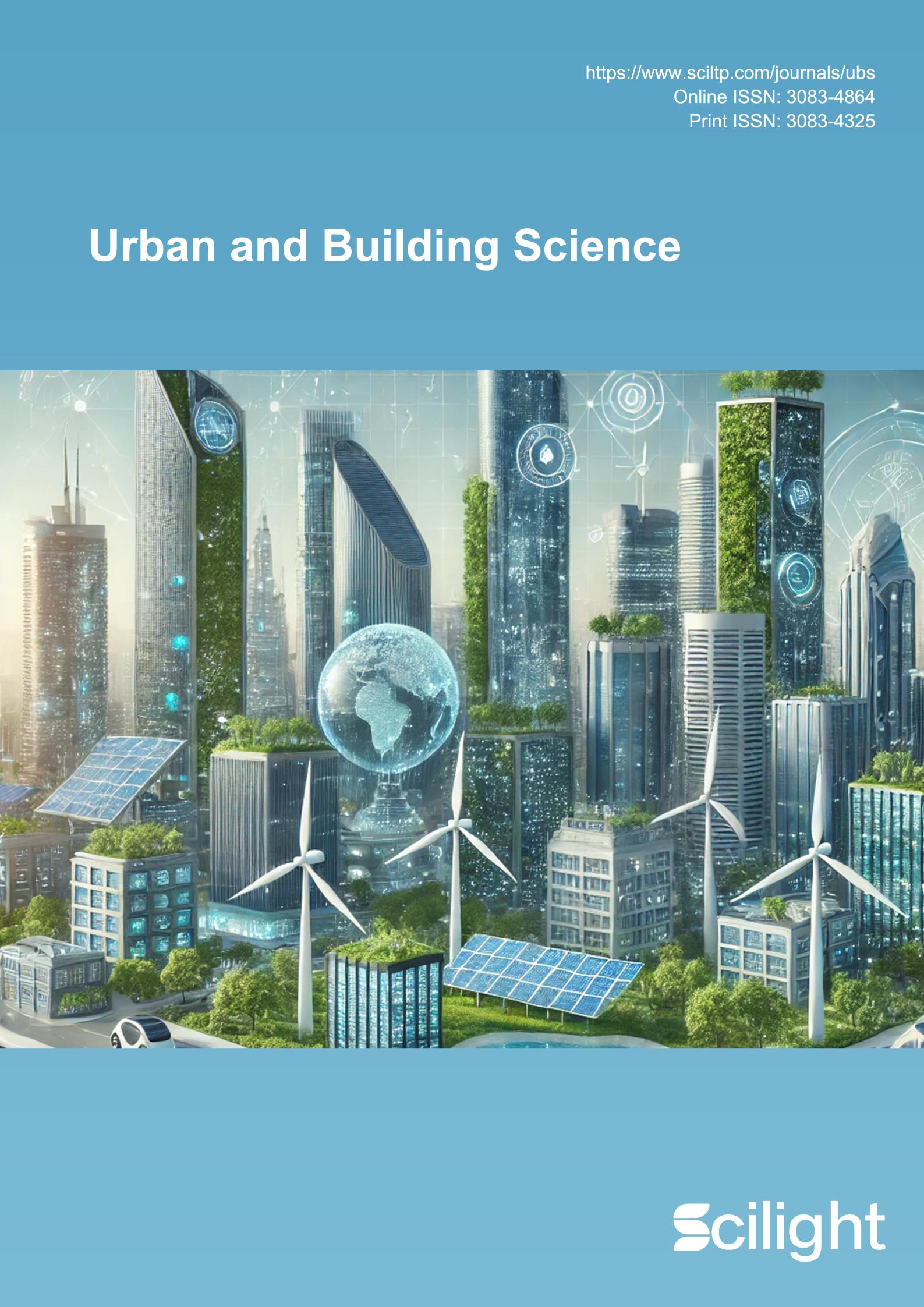
Building Cities and Communities with Resilience and Coexisting with Safety
Against the backdrop of intensifying global climate change and frequent extreme disasters, urban safety and disaster preparedness face severe challenges. Resilient cities and communities, a new paradigm integrating disaster prevention and mitigation, ecological sustainability, and intelligent governance, have become a key direction for the resilient, sustainable and inclusive urbanization, while ensuring citizens’ safety and health. This issue, focusing on " Building Cities and Communities with resilience and Coexisting with Safety ", aims to pool expertise from the urban construction industry, promote theoretical breakthroughs and practical innovations in resilience planning, disaster risk assessment, engineering disaster prevention and mitigation, and intelligent early warning, and contribute scientific solutions and policy pathways to enhance urban resilience and safeguard public safety. The issue aims to cover topics that include, but are not limited to, the following topics: Resilient urban and rural planning and design Improving community disaster resilience Extreme climate adaptation strategies Multi-hazard coupled risk assessment Ecological space and disaster prevention coordination Intelligent disaster monitoring and early warning technology Urban infrastructure disaster resilience Civil engineering structure seismic resistance and reinforcement technology New disaster prevention materials and structures Blast and impact resistance of engineering structures Interdisciplinary resilience governance mechanism Academic Editors Prof. Dr. Guofang Zhai ( guofang_zhai@nju.edu.cn ) School of Architecture and Urban Planning, Nanjing University, Nanjing 210093, China Dr. Yangli Li ( liyangli@tju.edu.cn ) School of Civil Engineering and Architecture, Southwest University of Science and Technology, Mianyang 621000, China Associate Prof. Dr. Yijun Shi ( yijun_shi@zafu.edu.cn ) College of Landscape Architecture, Zhejiang A&F University, Hangzhou 311300, China Associate Prof. Dr. Wei Zhai ( wei.zhai@utsa.edu ) College of Architecture, Planning, and Public Affairs, University of Texas at Arlington, Arlington, TX 76019, USA Associate Prof. Dr. Meng Meng ( mmeng@scut.edu.cn ) Department of Urban Planning, South China University of Technology, Guangzhou 510641, China Submission Guideline To submit your manuscript, please go to Urban and Building Science journal website at (https://www.sciltp.com/journals/ubs) and follow the procedures for manuscript submission. Author Submission Guidelines can be found at: https://www.sciltp.com/journals/ubs/instructionForAuthors There is N o Article Processing Charge for all submissions and accepted papers. All manuscripts will be peer-reviewed following the established policies and procedures of the journal. The final papers will be selected for publication depending on the results of the peer-review process and the reviews of the Academic Editors and Editor-in-Chief.
Urban and Building Science
Deadline: 31 Jan 2026
Call for Papers — Photochemistry and Spectroscopy: In Honour of Prof. Giuseppe Zerbi for His Contributions to Molecular Spectroscopy and Advanced Materials
Photochemistry and Spectroscopy (PS) is delighted to launch a volume to honour Professor Giuseppe Zerbi, a visionary scientist whose groundbreaking contributions have profoundly shaped the fields of molecular spectroscopy and advanced materials. As early as the 1960s, Professor Zerbi was among the first to recognize the potential of molecular spectroscopy — particularly vibrational spectroscopy — not only as an analytical tool but also as a powerful method for investigating molecular structure and dynamics. Inspired by this insight, he established a truly interdisciplinary school where chemists, experimental and theoretical physicists, and engineers trained side by side, harnessing the synergy between experimentation and theoretical modeling. In the study of polymers, Professor Zerbi connected the molecular approach with solid-state physics methods, illustrating how symmetry principles can be used to understand phenomena that arise from the structural regularity of polymer crystals and the effects of chemical and conformational defects. This methodological framework supports his original contributions to understanding π-conjugated materials, which include conducting polymers, molecular systems, and graphene-based materials. He also pioneered the innovative use of instrumentation, consistently seeking new experimental setups and techniques to explore unique materials resulting from collaborations with leading groups in the design and synthesis of organic materials for molecular electronics and photonics. Those of us who had the privilege of working in the research group he led feel proud and deeply grateful for the scientific and human legacy he has left behind. It is with great joy that we celebrate Professor Zerbi through this volume. We are pleased to welcome the contributions of his colleagues and friends who, over the years, have come to appreciate not only his scientific excellence but also his open, warm, and engaged approach to collaboration and mentorship. All articles published in Photochemistry and Spectroscopy (PS) are Gold Open Access: immediately freely available to read, download, unlimited use, and reuse of articles. Article Processing Charges (APCs) are waived before December 2026. For the PS journal website, please visit: https://www.sciltp.com/journals/ps For the submission, please visit: https://sciflux.org/authors/submissions For the News, please visit: https://www.sciltp.com/news/2505141015299232 For Early Access Publications, please visit: https://www.sciltp.com/journals/ps/volumes-and-issues/earlyAccess Chiara Castiglioni Matteo Tommasini Rui Fausto Professor Giuseppe Zerbi was born in Saronno in 1933. He earned his degree in Chemistry from the University of Pavia in 1956. Soon after, he began his career as an assistant to Nobel laureate Giulio Natta at the Politecnico di Milano . Expanding his research experience internationally, he worked as a guest scientist at the University of Minnesota from 1959 to 1962. Upon returning to Italy, he joined the National Research Council of Italy (CNR) as a researcher, once again working at the Politecnico di Milano . During this period, he also spent a year at the National Bureau of Standards in Washington, D.C. In 1968, Zerbi was appointed director of the Institute of Macromolecular Chemistry at CNR in Milan, a position he held for seven years. In 1975, he transitioned fully into academia, accepting a chair in Molecular Spectroscopy at the University of Trieste. In 1980, he returned to the Politecnico di Milano , where he held a chair in Materials Science and continued his academic and research activities for the remainder of his career. Zerbi is recognized as a pioneering figure in Vibrational Spectroscopy. His approach — combining experimental research with empirical and quantum mechanical modelling — provided profound insights into the molecular and electronic structures of materials. His research primarily focused on the use of vibrational spectroscopy to study the structure, dynamics, and properties of organic materials, polymers, and organic electrically conducting polymers. Notably, polyacetylene (PA) was first synthesized by Natta et al. in 1958 but remained largely overlooked until 1975, when Japanese researchers demonstrated its electrical conductivity. This discovery ignited tremendous scientific and industrial interest, leading to debates between two schools of thought: one rooted in chemistry and the other in physics. At the Politecnico di Milano , Zerbi led a multidisciplinary research team comprising experts in chemistry, spectroscopy, physics, theoretical chemistry, and materials science. His molecular approach became a cornerstone of research in this field. Over his career, Zerbi published more than 500 papers in international journals and delivered numerous invited lectures at specialized conferences, industries, Gordon Conferences, and cultural institutions. He also served on the editorial boards of several scientific journals. His contributions were widely recognized with numerous prestigious awards, including: Coblenz Society Award (1964) OSA Lippincott Medal (1996) Ital Gas Prize (1986) Max Planck Society Prize (1993) Bonino Medal of the Italian Physico-Chemical Society (2022) He was also honoured as a Fellow of the American Physical Society (1981) and elected a member of the Accademia Nazionale dei Lincei (2004). Beyond research, Zerbi was deeply involved in education and academic governance. He served for four years as an elected member of the Academic Senate of the Politecnico di Milano . He played a pivotal role in advanced training programs, serving as Director of the Specialization School in Polymer Science and of the Doctoral School at the Politecnico di Milano . For several years, he also designed and directed a course on cultural heritage conservation, where he lectured on the applications of infrared and Raman spectroscopy in art and archaeology. In recognition of his exceptional contributions, the Politecnico di Milano awarded him the title of Professor Emeritus in 2010. Academic Editor s Chiara Castiglioni is a full Professor of Materials Science and Technology in the Department of Chemistry, Materials, and Chemical Engineering Giulio Natta at Politecnico di Milano . She coordinates the Laboratory of Molecular Spectroscopy within the Laboratory of Organic Functional and Nanostructured Materials. From 2010 to 2019, she served as Coordinator of the PhD Program in Materials Engineering at Politecnico di Milano . She is a member of the Editorial Board of the Journal of Raman Spectroscopy, a member of the International Advisory Board of the Congress on Synthetic Metals (ICSM), and a member of the Steering Committee of the European Congress on Molecular Spectroscopy (EUCMOS). She has been mentored by Giuseppe Zerbi and Mariangela Gussoni, and the collaboration with them had a profound impact on her research journey, dealing with the molecular spectroscopy and theoretical modeling of semi-conducting organic materials and polymers, polycyclic aromatic molecules, graphenes, and carbon nanotubes. Her recent interests concern the development and spectroscopy of graphene nanoparticles and doped conducting polymers and applications of the micro-spatially offset Raman spectroscopy (SORS) to cultural heritage. She has co-authored approximately 260 scientific papers published in peer-reviewed international journals. h -index is 44. ORCID: https://orcid.org/0000-0002-6945-9157 M atteo Tommasini is a full professor of Materials Science and Technology in the Department of Chemistry, Materials, and Chemical Engineering Giulio Natta at Politecnico di Milano . He coordinates the Vibrational Spectroscopy group (VISPEC) within the Società Italiana di Ottica e Fotonica (SIOF). He has investigated the spectroscopic behavior of materials since completing his thesis in Nuclear Engineering (1998) and earning his PhD in Materials Engineering (2002) under the guidance of Professors Chiara Castiglioni and Giuseppe Zerbi. His research focuses on characterizing molecular materials using electronic and vibrational spectroscopy techniques interpreted through quantum chemical methods. The investigated systems include nanostructured carbon, graphene molecules, organic functional materials, and polymers. He also examined drug detection methods for clinical applications that utilize Surface-Enhanced Raman Spectroscopy (SERS). He has co-authored approximately 200 scientific papers published in peer-reviewed international journals. h -index: 44; ORCID: https://orcid.org/0000-0002-7917-426X Rui Fausto is full Professor and the Coordinator of the Computational Chemistry, Spectroscopy and Thermodynamics research group at the University of Coimbra (Portugal), and Professor and the ERA-Chair holder of the Spectroscopy@IKU: Manipulating and Characterizing Molecular. Architectures: From Isolated Molecules to Molecular Crystals at the Istanbul Kultur University (Türkiye). He is the President of the Steering Committee of EUCMOS, the Editor-in-Chief of Photochemistry and Spectroscopy and a member of the editorial boards of several scientific journals. Throughout his career, Rui Fausto has hold prominent administrative and scientific roles in the Academia, including the presidency of the Institute for Interdisciplinary Research, the presidency of the Coimbra Chemistry Research Centre, and the vice-presidency of the Scientific and Directive Boards of the Faculty of Sciences and Technology of the University of Coimbra. He was awarded twice the Excellence Prize in Sciences by the Portuguese Science Foundation. Rui Fausto has published or edited nearly 50 scientific books and is author of over 500 research articles mostly focusing the photochemistry of organic molecules and of matrix-isolated reactive intermediates. He is one of the pioneers in using vibrational excitation to induce chemical reactivity in organic molecules under matrix-isolation conditions, and has also an extensive and influential work on the photochemistry of reactive intermediates and quantum mechanical tunnelling. Besides science, his interests also extend to music, painting, and human rights advocacy. h -index: 58. ORCID: https://orcid.org/0000-0002-8264-6854
Photochemistry and Spectroscopy
Deadline: 31 Mar 2026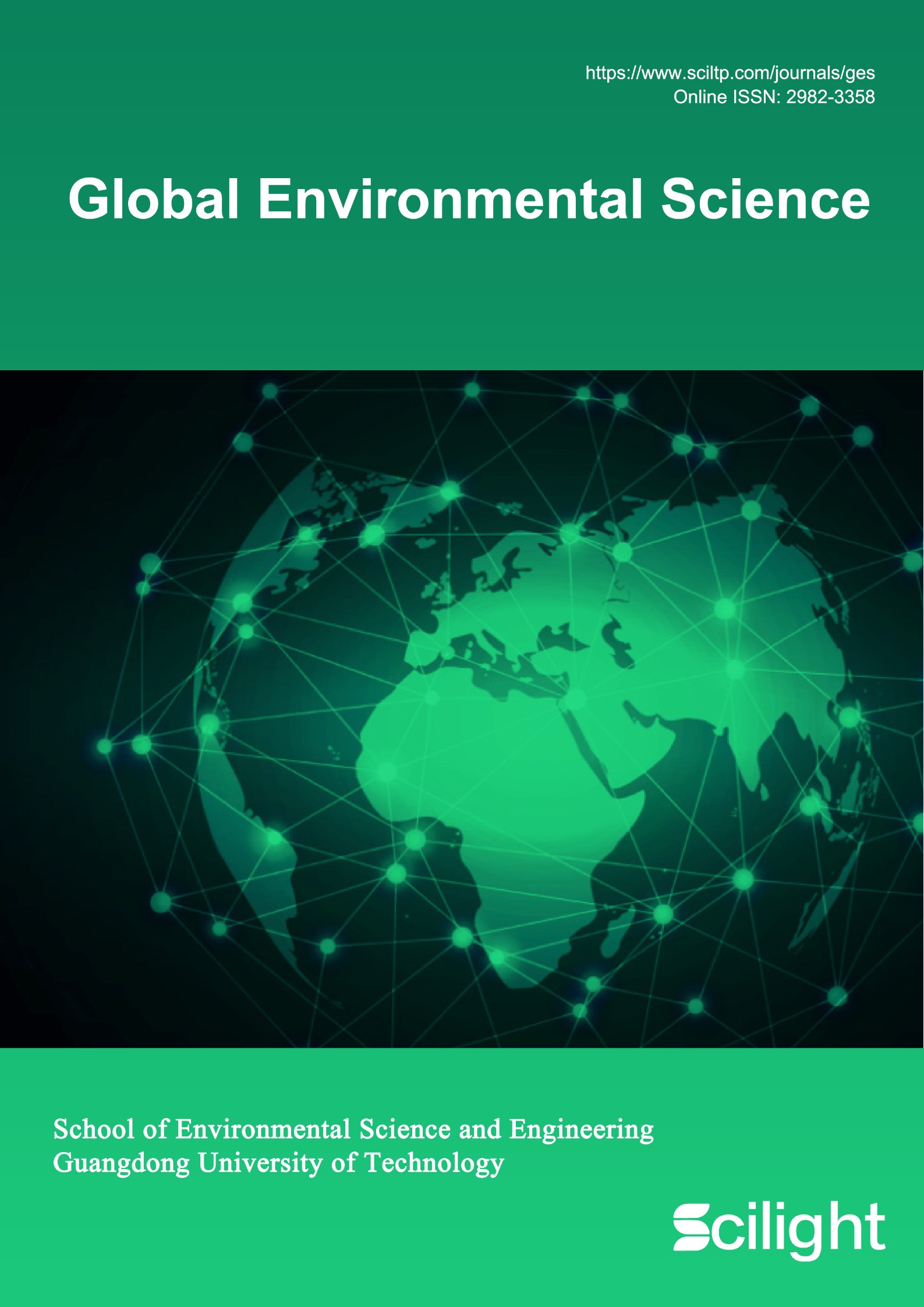
Environmental Pollution and Control Mechanisms
Global Environmental Science (GES) is announcing a Call for Papers for the topic “Environmental Pollution and C o ntrol Mechanisms ” . The rapid pace of industrialization and urbanization has led to the widespread presence of both emerging and legacy contaminants in the environment, posing a significant global challenge. A deep understanding of the fate of these pollutants in complex environmental matrices and the development of efficient, green control technologies is urgently needed. This Special Issue aims to compile the latest research advances focusing on the occurrence, transformation, and control mechanisms of environmental pollutants. It seeks to provide a platform for academic exchange to advance theoretical knowledge and technological applications in environmental science, ultimately contributing to the improvement of ecological quality. We welcome original research articles, reviews, commentaries and perspectives related to various aspects of Environmental Pollution and Control Mechanisms. Topics of Interest Include (but are not limited to): Occurrence,distribution, source apportionment, and risk assessment of emerging and legacy pollutants. Transport, diffusion, and fate of various pollutants in environmental multi-media (air, water, soil, organism). Chemical, photochemical, and biological transformation pathways and mechanisms. Identification of degradation intermediates and assessment of their ecotoxicity. Application of advanced oxidation/reduction processes (e.g., photocatalysis, electrocatalysis, Fenton-like reactions) for pollution control. Design, synthesis, and performance of novel functional catalytic materials (e.g., single-atom catalysts, MOFs, carbon-based materials). Mechanistic studies and pathway elucidation of catalytic degradation processes. Application and challenges of coupled catalytic technologies in practical environmental remediation engineering. Academic Editors: Prof. Wanjun Wang, wanjun@gdut.edu.cn Prof. Taicheng An, antc99@gdut.edu.cn Submission Deadline: 30 April 2026 Office Contact: ges@sciltp.com Submission Link: https://sciflux.org/authors/submissions
Global Environmental Science
Deadline: 30 Apr 2026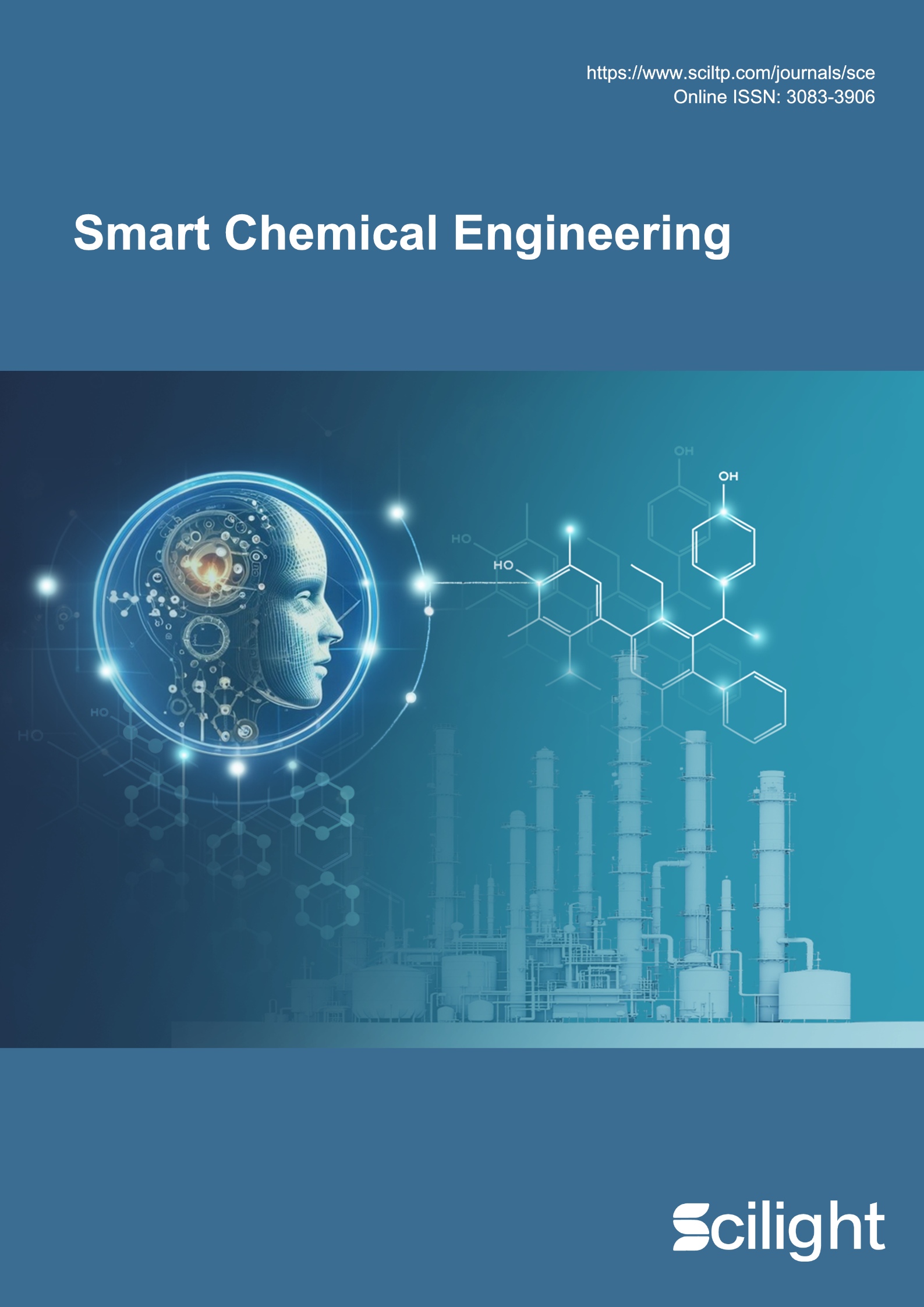
Artificial Intelligence Coupled with Thermodynamics: From Fundamental Theory to Process Engineering
Smart Chemical Engineering (SCE) is announcing a Call for Papers for the topic “Artificial Intelligence Coupled with Thermodynamics: From Fundamental Theory to Process Engineering” . Thermodynamics provides the foundational principles governing energy, entropy, and equilibrium in physical and chemical systems. Artificial Intelligence (AI) is redefining the landscape of thermodynamics by enabling molecular-level insights, rapid property prediction, and complex process simulation and optimization. While AI accelerates thermodynamic research, thermodynamic laws simultaneously empower AI models by providing physical constraints and enhancing interpretability. Smart Chemical Engineering (SCE) hereby announces this Call for Papers, which will also be featured as an initiative by the Big Data and Intelligent Design Committee of the Chemical Industry and Engineering Society of China. We sincerely invite scholars to submit pioneering contributions that highlight the integration of AI and thermodynamics across multiple scales. We welcome original research articles, reviews, and perspective papers that explore the application of machine learning and other AI techniques to advance both macroscopic and microscopic thermodynamics. Contributions may explore the synergy between AI and thermodynamics, which holds immense potential to revolutionize how we model, predict, optimize, and control complex processes—from molecular-scale simulations to industrial-scale process engineering. Topics of interest include, but are not limited to: AI for thermodynamic property prediction and uncertainty quantification AI-enhanced modeling of equations of state, chemical equilibria, phase equilibria, and transport properties Physics-informed machine learning models embedding thermodynamic laws (e.g., conservation of energy, second law constraints) AI-driven discovery of novel materials with tailored thermodynamic behavior Applications in carbon capture, hydrogen economy, battery thermal management, sustainable manufacturing, renewable energy systems, pharmaceutical engineering, etc. Keywords: artificial intelligence; thermodynamics; molecular simulation; physics-informed machine learning; process simulation and optimization Academic Editor : Prof. Hongliang Qian China Pharmaceutical University Submission Deadline: 10 May 2026 Office Contact: sce@sciltp.com Submission Link: https://sciflux.org/authors/submissions
Smart Chemical Engineering
Deadline: 10 May 2026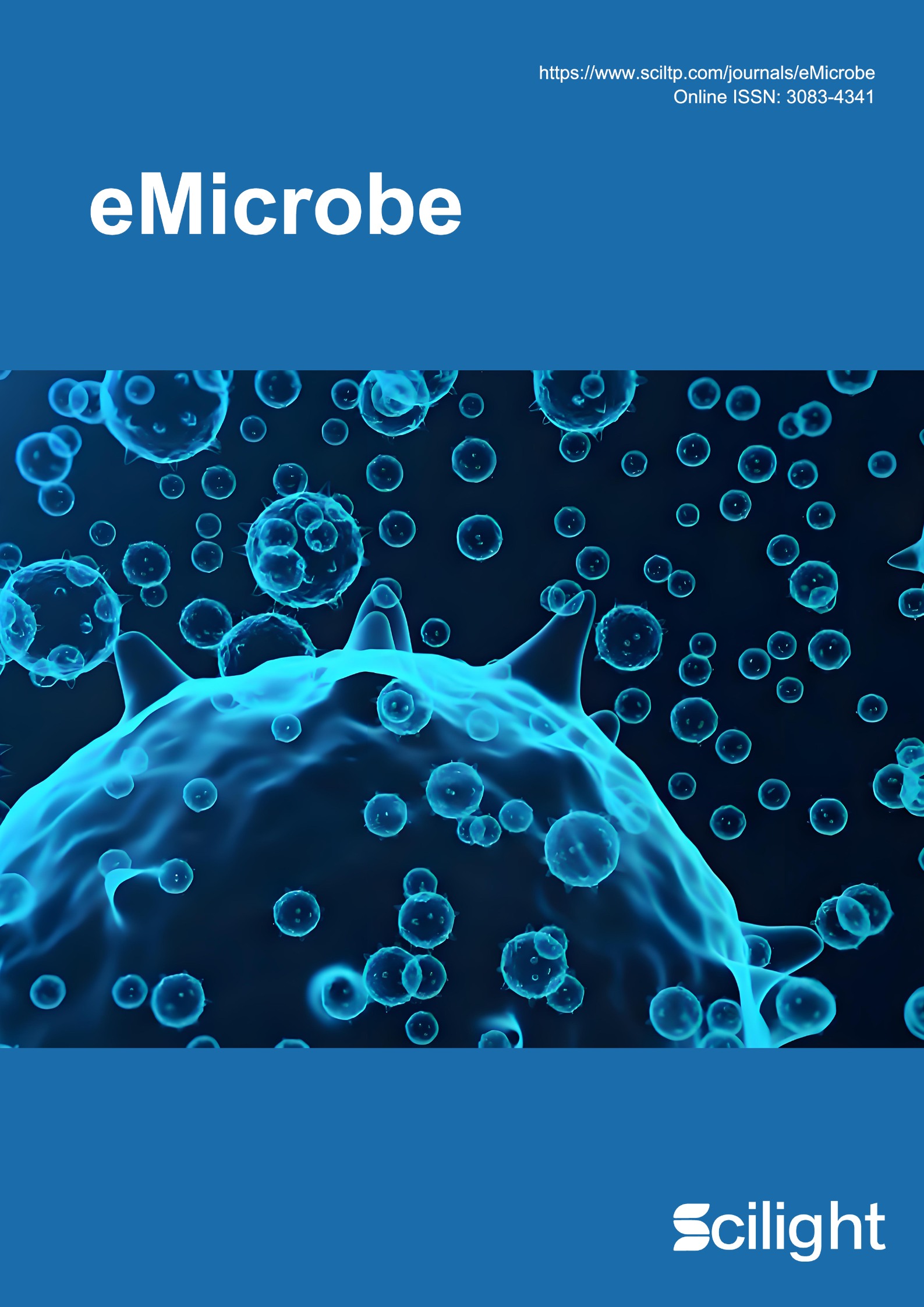
Insights into Host-microbial Pathogen Interactions and Pathogenesis through Computational Approaches
This topic is designed to provide a comprehensive platform for cutting-edge research on the molecular dynamics governing host–microbial pathogen interactions. By leveraging molecular dynamics (MD) simulations, molecular modeling, and advanced in silico analyses—such as machine learning, deep learning, and artificial intelligence—we seek contributions that offer novel insights into the complex biomolecular processes driving pathogenesis and host responses during infection. We welcome studies that simulate, visualize, and predict the functional consequences of biomolecular interactions—including protein–protein, protein–nucleic acid, and protein–lipid contacts—in infectious contexts. This encompasses mechanistic investigations into cell signaling pathways, metabolic reprogramming, cytoskeletal reorganization, membrane–protein interactions, regulation of gene expression, stress responses, and enzymatic or immunological reactions, all resolved at the molecular scale. Research that integrates computational approaches to interpret, predict, or experimentally validate molecular determinants of host–pathogen interplay, microbial adaptation, and disease progression is strongly encouraged. Special emphasis will be placed on studies exploring: Molecular dynamics simulations of interactions involving microbial and host proteins, nucleic acids, or secondary metabolites during infection The impact of microbial genetic mutations and functional adaptations on virulence and host defense mechanisms Inhibition or activation of signal transduction pathways in host–pathogen interactions Remodeling of cytoskeletal and mechano-signaling networks during infection Host and microbial stress response pathways, including heat shock, oxidative stress, and immune reactions Membrane–protein interactions, intracellular trafficking, and their roles in pathogenesis Enzyme kinetics, structural and functional crosstalk, and systems-level analyses Artificial intelligence and machine learning approaches for modeling host–pathogen dynamics and predicting infection outcomes We invite submissions of original research articles, reviews, and methodological papers spanning from fundamental molecular mechanisms to translational applications. Studies may address pathogens affecting human, animal, or plant hosts, thereby extending the scope beyond medical mycology. By integrating perspectives from biochemistry, cell biology, biophysics, computational biology, bioinformatics, and systems medicine, this issue aims to foster interdisciplinary dialogue and catalyze innovative strategies for combating infectious diseases. Please contact Dr. Monsicha Pongpom , Dr. Tanaporn Wangsanut , or Dr. Narin Lawan if you have any questions. Keywords microorganisms pathogenesis molecular dynamics simulation molecular modeling mutation effect signaling pathway heat shock response oxidative response stress response pathway enzyme reaction analysis host response immunologic response AI machine learning deep learning
eMicrobe
Deadline: 30 Jun 2026
Environmental Geochemistry of Toxic and Hazardous Pollutants
Global Environmental Science (GES) is announcing a Call for Papers for the topic “ E nvironmental Geochemistry of Toxic and Hazardous Pollutants” . Toxic and hazardous pollutants—including heavy metals, persistent organic pollutants (POPs), microplastics and emerging contaminants—pose significant threats to ecosystem stability, environmental quality and human health. Understanding their sources, geochemical behaviors including transport pathways, transformations and fate , is essential for mitigating their ecological and health impacts. We welcome original research articles, reviews, commentaries and perspectives related with the environmental geochemistry of toxic and hazardous pollutants in diverse environmental systems. Topics of Interest Include (but are not limited to): Geochemical processes and transformation mechanisms of toxic pollutants in soil, water, and sediment; Source apportionment, transport dynamics, and fate modeling of hazardous contaminants; Coupled biogeochemical cycling of pollutants and nutrients; Environmental monitoring, speciation analysis, and advanced analytical techniques; Microbial interactions and biogeochemical remediation of toxic pollutants; Risk assessment, pollution control, and ecological restoration strategies; Climate change impacts on the geochemistry and mobility of toxic substances; Emerging contaminants (e.g., PFASs, micro/nanoplastics) and their environmental behaviors. Academic Editors: Prof. Hefa Cheng, hefac@pku.edu.cn Prof. Taicheng An, antc99@gdut.edu.cn Submission Deadline: 28 February 2026 Office Contact: ges@sciltp.com Submission Link: https://sciflux.org/authors/submissions
Global Environmental Science
Deadline: 28 Feb 2026
Artificial Intelligence for Chemical Product Engineering: From Process Regulation to Product Customization
Smart Chemical Engineering (SCE) is announcing a Call for Papers for the topic “Artificial Intelligence for Chemical Product Engineering: From Process Regulation to Product Customization” . Chemical engineering has evolved from traditional chemical process engineering toward a new era that integrates process and product engineering, with the goal of precisely customizing chemical products. Artificial intelligence (AI) is deeply permeating all aspects of chemical engineering, with applications extending beyond individual unit operations (e.g., separation and reaction) to integrated processes/systems, thereby advancing optimization and regulation of processes and the targeted customization of high-performance products. Smart Chemical Engineering (SCE) hereby announces this Call for Papers, to reflect the deep integration trend between AI and chemical engineering, as well as to highlight AI’s pivotal role in driving the shift from process-oriented to product-oriented in chemical engineering. We sincerely invite scholars worldwide to contribute pioneering findings that showcase frontier advances in AI-empowered chemical product engineering. We welcome original research articles, reviews and perspectives that explore the applications and breakthroughs of machine learning and other artificial intelligence technologies in the innovation development of chemical product engineering. Topics of interest include, but are not limited to: Correlation Mechanism of "Process Conditions-Product Structure-Performance" in AI-based Chemical Product Engineering AI-driven Multi-Objective Process Optimization, Regulation, and System Integration Focusing on Product Structure and Performance AI-assisted Multi-dimensional Regulation Mechanism and Action Principle for Chemical Products Core Theories, Key Methods and Innovations Algorithms of Artificial Intelligence for Chemical Product Engineering Keywords: artificial intelligence; machine learning; chemical product engineering; chemical process engineering; fundamental mechanism Academic Editors: Prof. Zheng-Hong Luo(Shanghai Jiaotong University/ Ningxia University) Dr. Jiantao Li(Ningxia University) Dr. Jie Jin(Shanghai Jiaotong University) Submission Deadline: 30 June 2026 Office Contact: sce@sciltp.com Submission Link: https://sciflux.org/authors/submissions
Smart Chemical Engineering
Deadline: 30 Jun 2026
Hypervirulent Klebsiella pneumoniae Infection
Hypervirulent Klebsiella pneumoniae (hvKp) is distinguished from classical K. pneumoniae by its ability to cause community-acquired, invasive infections, such as pyogenic liver abscess and endophthalmitis, even in healthy individuals, whereas the classical form typically leads to opportunistic healthcare-associated infections. Globally, the dominant clone responsible for these hypervirulent invasive infections is K. pneumoniae clonal group 23, which includes sequence type 23. Hypervirulent K. pneumoniae clones are typically characterized by the presence of capsular serotype K1 and a set of hypervirulence-associated genes, such as ybt , iuc , iro , rmpA , and rmpA2 , often encoded on dedicated hypervirulence plasmids. These genetic determinants are central to the hypervirulent phenotype. Although antimicrobial resistance has not traditionally been a hallmark of hvKp, the recent emergence of carbapenem-resistant hypervirulent K. pneumoniae has been increasingly reported worldwide. This topic showcases cutting-edge research on the mechanisms underlying hypervirulent Klebsiella pneumoniae infections, with a particular focus on genetic and molecular factors driving both hypervirulence and antimicrobial resistance. We welcome the submission of original research articles, reviews, and perspectives that contribute to this rapidly evolving and exciting area of microbiology and medicine. Please contact Dr. Atsushi Togawa , Dr. Anthony R. Tam if you have any questions. Keywords Klebsiella pneumoniae invasive infection hypervirulence genetic and molecular determinants antimicrobial resistance
eMicrobe
Deadline: 31 Dec 2026

